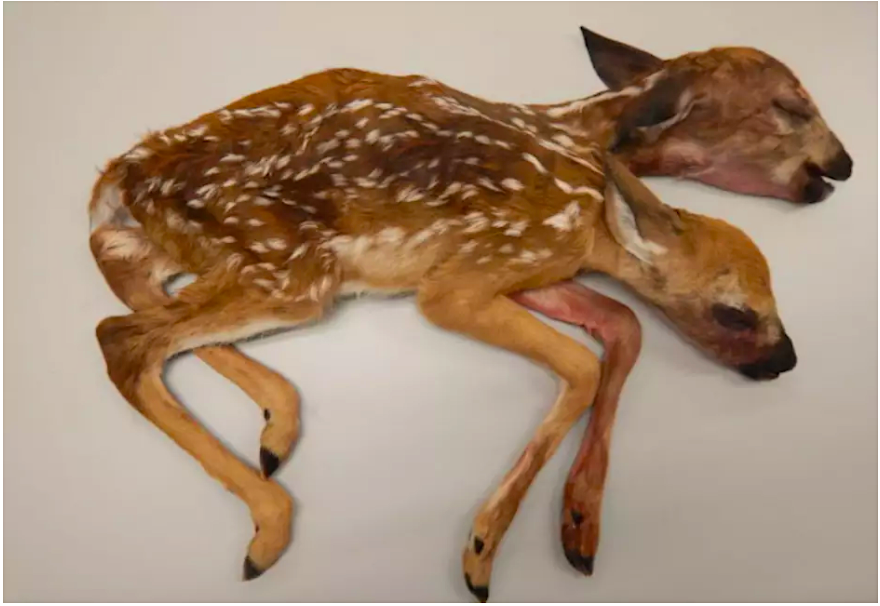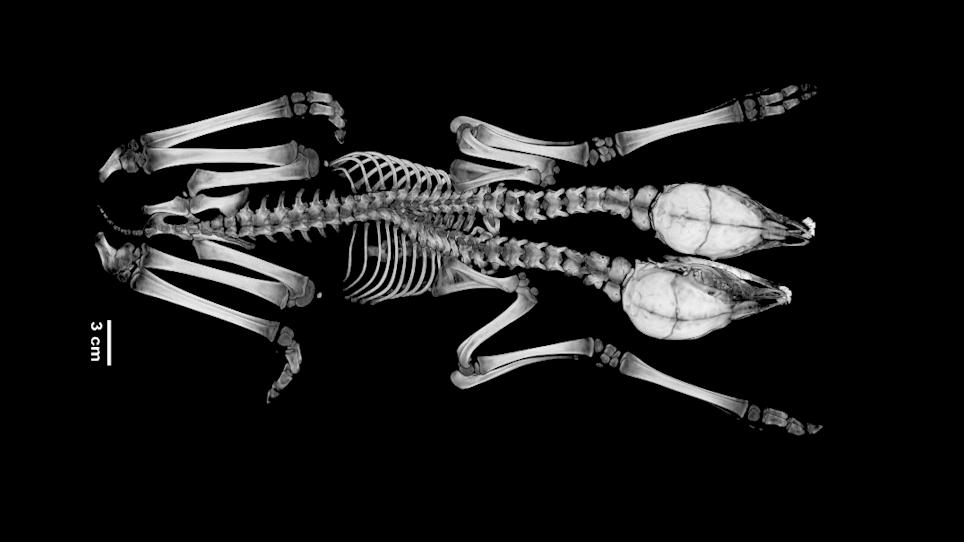A study of the first known conjoined deer fawns born was recently published in the science journal American Midland Naturalist.
The fawns, discovered in 2016 in Minnesota, were stillborn. A mushroom hunter found the fawns a mile from the Mississippi River. The twins were clean, dry and appeared to be recently deceased.
According to University of Georgia’s Warnell School of Forestry and Natural Resources, the fawns are believed to be the first found to reach full term and then delivered. Other conjoined twin fawns have been found, but still in utero.
Related: Could This Deer Fawn Survive Without Its Mother?
Conjoined twins are more commonly found in domestic animals, particularly in cattle and sheep, but are far less common in wildlife.

There are only 19 confirmed instances of conjoined twins in wildlife between 1671 and 2006, only five of which were in the deer family. Photo: University of Georgia
“It’s amazing and extremely rare,” said Gino D’Angelo of the University of Georgia, who studied the deer. “We can’t even estimate the rarity of this. Of the tens of millions of fawns born annually in the U.S., there are probably abnormalities happening in the wild we don’t even know about.”
D’Angelo, an assistant professor of deer ecology and management at the university’s forestry school, worked at the Minnesota Department of Natural Resources at the time the twin fawns were found.
“Their anatomy indicates the fawns would never have been viable,” D’Angelo said “Yet, they were found groomed and in a natural position, suggesting that the doe tried to care for them after delivery. The maternal instinct is very strong.”
Related: Farmland or Forests: Where Are Deer Fawns Most Likely to Survive?
Related: Should You Shoot Does With Fawns?
Researchers examined much of the scientific literature and found only 19 confirmed instances of conjoined twins in wildlife between 1671 and 2006, only five of which were in the deer family. The conjoined fawns will be on display at the Minnesota Department of Natural Resource’s headquarters in St. Paul, Minnesota, while a skeletal display will be housed at the University of Minnesota Veterinary Anatomy Museum.
D’Angelo co-authored the paper with Louis Cornicelli with the Minnesota Department of Natural Resources, and Christina Clarkson and Arno Wuenschmann with the University of Minnesota. A full version of the study is available online at http://www.bioone.org/doi/10.1674/0003-0031-179.2.299
Featured photo: Minnesota Department of Natural Resources, University of Minnesota, University of Georgia.






